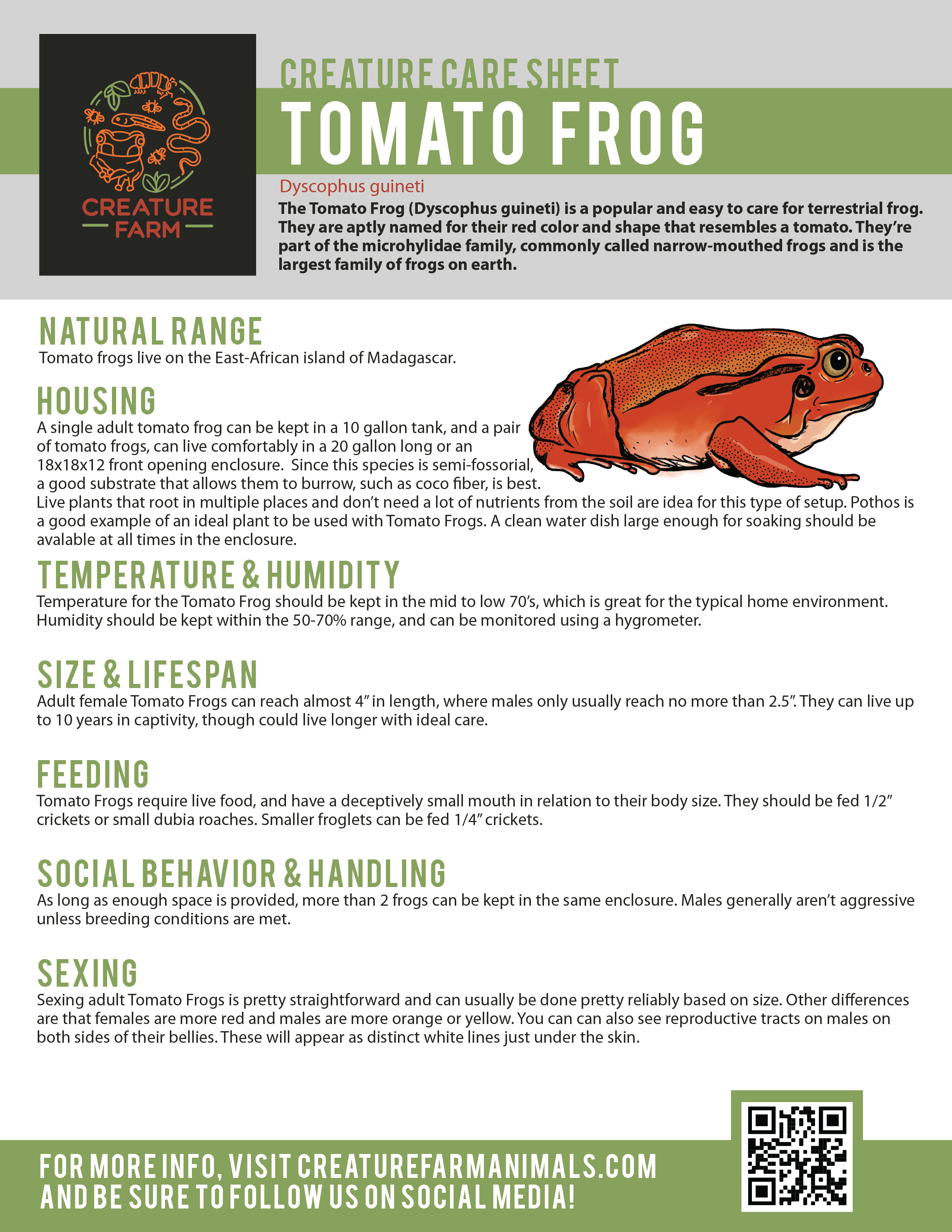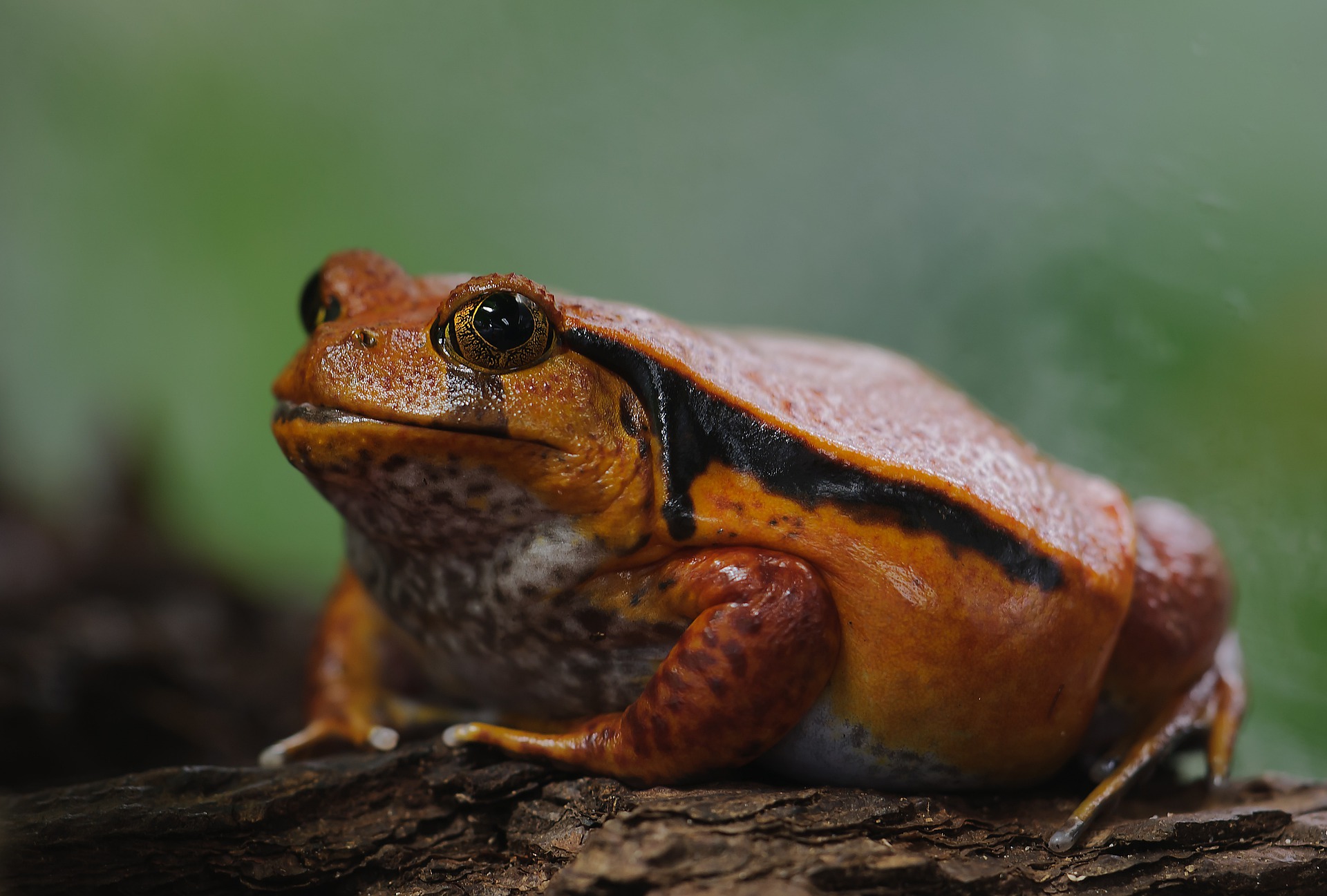CARE GUIDE
Dyscophus guineti
The Tomato Frog (Dyscophus guineti) is a popular and easy to care for terrestrial frog. They are aptly named for their red color and shape that resembles a tomato. They’re part of the microhylidae family, commonly called narrow-mouthed frogs and is the largest family of frogs on earth.
NATURAL RANGE
Tomato frogs live on the East-African island of Madagascar.
HOUSING
A single adult tomato frog can be kept in a 10 gallon tank, and a pair of tomato frogs, can live comfortably in a 20 gallon long or an 18x18x12 front opening enclosure. Since this species is semi-fossorial, a good substrate that allows them to burrow, such as coco fiber, is best. Live plants that root in multiple places and don’t need a lot of nutrients from the soil are idea for this type of setup. Pothos is a good example of an ideal plant to be used with Tomato Frogs. A clean water dish large enough for soaking should be avalable at all times in the enclosure.
TEMPERATURE & HUMIDITY
Temperature for the Tomato Frog should be kept in the mid to low 70’s, which is great for the typical home environment. Humidity should be kept within the 50-70% range, and can be monitored using a hygrometer.
SIZE & LIFESPAN
Adult female Tomato Frogs can reach almost 4” in length, where males only usually reach no more than 2.5”. They can live up to 10 years in captivity, though could live longer with ideal care.
FEEDING
Tomato Frogs require live food, and have a deceptively small mouth in relation to their body size. They should be fed 1/2” crickets or small dubia roaches. Smaller froglets can be fed 1/4” crickets.
SOCIAL BEHAVIOR
As long as enough space is provided, more than 2 frogs can be kept in the same enclosure. Males generally aren’t aggressive unless breeding conditions are met.
SEXING
Sexing adult Tomato Frogs is pretty straightforward and can usually be done pretty reliably based on size. Other differences are that females are more red and males are more orange or yellow. You can can also see reproductive tracts on males on both sides of their bellies. These will appear as distinct white lines just under the skin.




